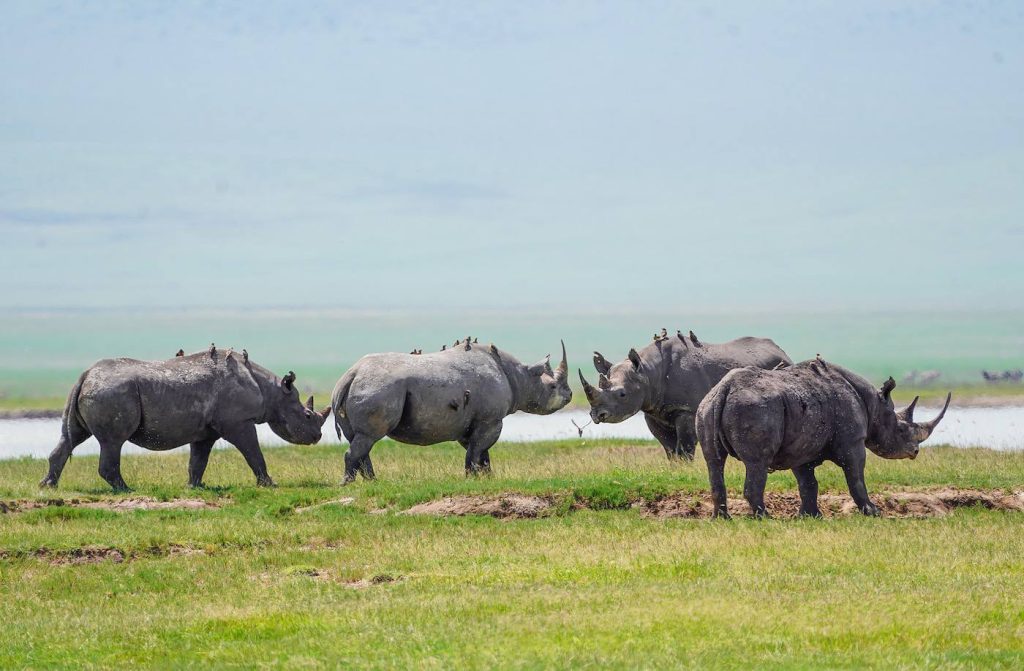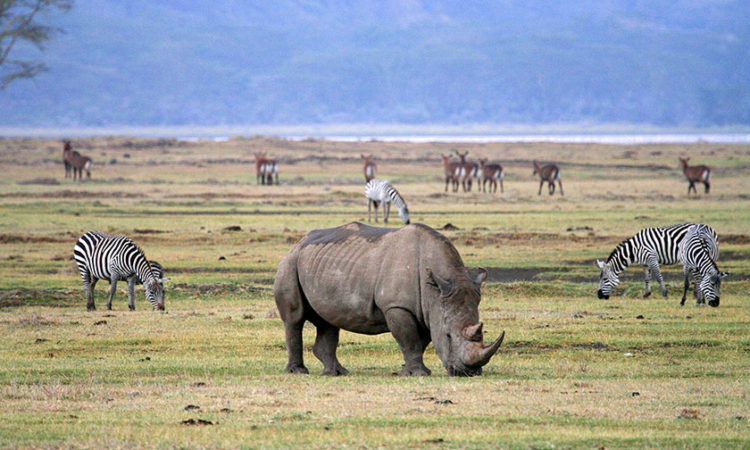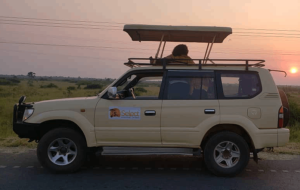Black Rhinos in Ngorongoro crater
Black Rhinos in Ngorongoro crater : The Ngorongoro crater is the centerpiece of the Ngorongoro conservation area and the biggest unbroken volcanic caldera in the world. It is one of Tanzania’s top wildlife attractions and a UNESCO World Heritage site because of its uniqueness and beauty. The Ngorongoro crater, which is 2,000 feet deep and 260 square kilometers broad, was created by the eruption of a volcano about 2-3 million years ago.

About 153 kilometers west of Arusha Town, Tanzania’s safari center, is the Ngorongoro conservation area, which is home to the Ngorongoro crater.
Black rhinos are an extremely rare wildlife species that were formerly common throughout sub-Saharan Africa but are now in danger of going extinct because of excessive poaching. They are a native species of Botswana, Kenya, Malawi, Mozambique, Namibia, Swaziland, Zambia, Zimbabwe, Uganda, and Tanzania.
Rhinos are members of the Rhinocerotidae family and come in a variety of subspecies, three of which the International Union for Conservation of Nature (IUCN) has listed as extinct. Rhinos are locally known as Kifaru in the Swhaili language. Regardless of their names, black and white rhinos are both grey in hue. The rhinos are divided into two subspecies. White rhinos have a square upper lip, whereas black rhinos have a pointed or hooked lip. Rhinos are classed based on lip morphology rather than color. Black rhinos are browsers, grazing on trees and shrubs, and they use their lips to grab leaves and fruits off tree branches. This difference in lip shape is related to their diet. White rhinos are known to move with their heads and squared lips lowered to the ground while they munch on grass.
Black rhinos have two horns, the front one being larger than the back one. The rhino’s horn may grow up to 5 feet long and increases in length by 3 inches annually. The rhinos’ horns are extremely beneficial to them and are used for protection; female rhinos use them to guard their offspring, and male rhinos use them to advance in fight.
Compared to the two kinds of African rhinoceros, black rhinos are smaller in size, and they belong to subspecies that are
black rhinos in the south
Black rhinos from the southern hemisphere are extinct; nonetheless, they were once present in the Cape of Good Hope, the Transvaal, South Africa, and southern Namibia.
black rhinos in the northeast
In the past, central Sudan, Eritrea, northern and southern Ethiopia, Djibouti, and northern and southern Somalia were home to north-eastern black rhinos.

Black rhinos in Chobe
Black rhinos are a native species that are only found in Chobe Valley in southeast Angola, the Zambezi region of northern Namibia, and northern Botswana. Chobe black rhinos are on the verge of extinction, with just one rhino remaining in Botswana.
black rhinos in Uganda
Black rhinos from Uganda, south Sudan, western Kenya, and much of southwest Ethiopia are now thought to be extinct species.
Western black rhinos
According to the IUCN, western black rhinos are an extinct species of black rhino. These black rhinos were formerly present in northeastern Nigeria, south Sudan, northern Central African Republic, southern Chad, northern Cameroon, and south-eastern Niger.
Eastern black rhinoceros
Formerly found in south Sudan, Uganda, Ethiopia, Kenya, and north-central Tanzania, eastern black rhinos are now only found in Kenya and Tanzania.
South eastern black rhinos
North-eastern South Africa, Malawi, Botswana, Zambia, north-eastern Tanzania, and south-eastern Kenya are home to south-central black rhinos. These black rhinos are distinguished by a head that is proportionately huge and noticeable skin folds.
Black rhinos in the southwest
Originally found in southwestern Angola and northwestern Namibia, south-western black rhinos have evolved to survive in arid and semi-arid environments.
According to data, Ngorongoro crater is one of the few places in Africa and Tanzania where one may still see black rhinos in their natural habitat. In 1965, there were 100 black rhinos documented there, but poaching caused their numbers to drop in the 1980s. However, the Tanzania National Parks Authority (TANAPA) has gradually raised the number of black rhinos in Ngorongoro crater to 26 black rhino individuals existing in Ngorongoro crater due to the use of utmost protective measures.
The majority of the crater’s regions are home to black rhinos in the Ngorongoro conservation area, but they are most frequently spotted in the area east of Leria Forest, specifically between Lerai and Gorigor Swamp. Black rhinos spend the night in the Lerai forest before dispersing to other parts of the crater in the morning. An early morning game drive is the optimum time to see black rhinos in the Ngorongoro conservation area before they disperse to feed
Due to the extreme poaching of black rhinos and the near extinction of these highly endangered animal species, there is a huge demand for their horn on the global market. As it is used to make ornate dagger handles, rhinoceros’ horn is highly prized in North Africa and the Middle East. It is also regarded as an aphrodisiac in Asia, including China, Taiwan, Hong Kong, and Singapore.
Where in Ngorongoro crater can you see black rhinos?
The region between Lerai woodland and Gorigor swamp is where black rhinos can be seen and easily observed in the Ngorongoro crater and Ngorongoro conservation area.
Forest of Lerai
Gorigor Swamp
Finding Ngorongoro crater
Accommodations in the Ngorongoro crater





